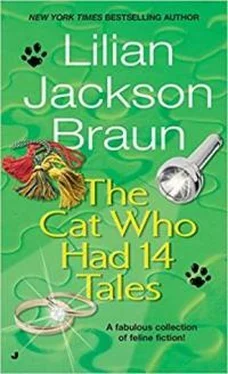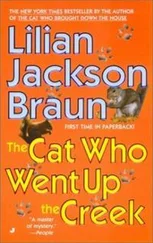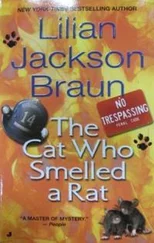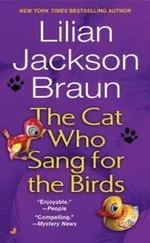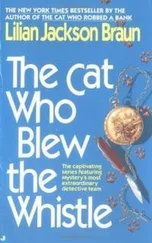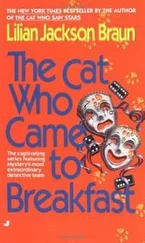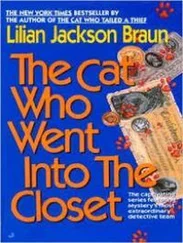The doorbell rang, and there on the front step stood a young woman with a tape recorder. Behind her was a man with a camera.
“We’re from the Daily Times,” she said. “I understand your little boy saved the neighborhood from a disaster.”
“Hey, that’s me!” yelled Vernon. “I’m a hero!” and he grabbed the reporter’s wrist.
“Vernon!” his father snapped. “Keep your hands off the lady.”
“We’d like to take his picture,” she said.
“I don’t think I want my son’s picture in the paper,” Mr. Jamison said. “He would be—”
“Yeh yeh yeh, I want my picture in the paper,” Vernon squealed. He tugged at the camera. “Take my picture!”
“Down, Junior,” said the photographer.
“Honey,” Mrs. Jamison whispered to her husband, “let them take his picture. It won’t do any harm.” So the entire family trooped to the hill of earth that had once been a lawn, Vernon clinging to the photographer’s arm and Mrs. Jamison jiggling the fretful baby and talking to the woman from the newspaper.
“Exactly how did it happen?” the reporter asked.
“Well,” said Mrs. Jamison, “Vernon came running in and said the Drooler was sniffing at our front lawn.”
“ Who was sniffing?”
“The Drooler. He’s just a cat that hangs around . . . . See! There he is under the junipers. He’s a mess, but he loves the children.”
“He’s got a tail like a sheep.”
“That’s a weird story,” said Vernon’s mother, rolling her eyes. “A couple of weeks ago my son pulled the cat’s tail off.”
“Really? Do they come off easily?”
“The Drooler’s did. He didn’t seem to mind.”
“And what happened today?”
“Well, the Drooler was sniffing a crack in the ground, so I investigated and smelled gas—that’s all.”
The photographer, meanwhile, had pried Vernon loose from his camera and was posing the boy in front of the junipers. “Now stoop down,” he said, “as if you were examining the place where you smelled gas.”
“Wait a minute,” said Mrs. Jamison. “Let me comb his hair and put him in a clean shirt. It won’t take a second.”
The photographer drew an impatient breath and looked up at the sky, and the reporter told him in a low voice: “It wasn’t the kid who found the leak. It was the cat.”
“That’s even better. Let’s shoot the cat.” He aimed the camera at the Drooler and clicked off a whole roll of film.
When Vernon reappeared with damp hair and clean shirt, the photographer said: “Now stand where I told you and hold your cat so he’s facing the camera.”
“He’s not my cat!” shouted Vernon. “I don’t want my picture taken with that sloppy old Drooler.”
“Sure you do,” said the man. “He’s a celebrity. He smelled gas and saved the whole neighborhood.”
“No, he didn’t!” Vernon screamed, pounding the photographer in the ribs. “ I saved the neighborhood! Get outa here, Drooler!” and he pitched a pebble at the cat, who blinked with pleasure and purred loudly.
“Vernon!” Mr. Jamison said sharply. “Do what the man says, or go in the house.”
“That’s all right,” said the photographer, suddenly agreeable. “Let him have his own way,” and he aimed his camera at Vernon and clicked the shutter—without, however, putting a new roll of film in the camera. To the reporter he added under his breath: “Let’s get out of here. I can’t stand a kid pawing me and grabbing my camera. Let’s see the TV crew cope with the brat. Here comes their van.”
So it was the Drooler’s picture that appeared on the six o’clock news and in the Daily Times on the following morning. The story read: “A suburban cat with three-quarters of a tail averted an explosion yesterday when he sniffed out a break in a gas main, caused by sewer excavations nearby.”
The photograph, which appeared on page one, was a good likeness of the Drooler, wet-chinned and congenial, and both the wire services and the national networks picked up the story. Almost overnight the Drooler became the media cat of the moment.
He is now receiving so much attention and so many offers that Mr. Jamison is acting as his personal manager. Since no family can lay undisputed claim to the Drooler, he has been incorporated, all shares being held equally by residents of Drummond Street. At the first shareholders’ meeting a proposal to change the name of the street was hotly debated before being tabled.
Vernon has been sent away to school, and the Drooler is now occupying his room. He no longer drivels. After two visits to the veterinary clinic and a new diet of nutritionally balanced catfood, he has lost his unattractive habit. Nevertheless, T-shirts and bumper stickers still proclaim him as the Drooler, and his story will soon be made into a major motion picture. Meanwhile, news has been leaked to the press that the Hero of Drummond Street will be pictured on the cover of a national magazine, nude.
The Mad Museum Mouser
A police car was cruising down the street as I parked at the gate of the Lockmaster Museum, and the officer at the wheel appeared to be scrutinizing my license plate. It was the first hint that something unusual was happening in that sleepy town. Security is the first consideration in museum management, but small communities rarely provide such noticeable police protection.
I removed my sunglasses, fixed my lipstick, found the Historical Society brochure in the glove compartment, and retrieved the little black box from under the seat. In doing research for my book, Minor Museums of Northeast Central United States, I have found a tape recorder more convenient than a notebook for collecting information.
The police cruiser made a second appearance as I slung the recorder strap over my shoulder, scanned the brochure, and recited the basic facts on the place I was about to visit:
“Lockmaster Museum, built in 1850 by Frederick Lockmaster, wealthy lumberman, shipbuilder, and railroad promoter. Victorian mansion with original furnishings. In family for five generations. Donated to the Historical Society for use as museum.”
Then I walked up the curving brick sidewalk to the house, dictating as I went: “Three-story frame construction with turrets, gables, balconies, bay windows, and verandahs. Set in spacious grounds surrounded by ornamental iron fence.”
The museum was open to the public only in the afternoon, but I had arranged for private admittance at 11:00 a.m. A tasteful sign on the door said CLOSED, but I rang the bell. While waiting I noted: “Magnificent carved entrance doors with stained glass fanlight and etched glass sidelights.”
There was no answer from within. I rang again and waited, turning to admire the landscaping. The police car was circling the block slowly for the third time.
The Lockmaster was the fifteenth small-town museum I had researched, and I knew what to expect. The interior would be embalmed in a solemn hush. The staff would consist of two genteel ladies over seventy-five who would say, “Please sign the guestbook,” when I arrived and, “Thank you for coming,” when I left, meanwhile conversing in whispers about the latest local funeral.
Such was not the case at the Lockmaster, however. As I was about to ring for the third time I heard the click of a lock being turned and the clank of a heavy bolt being drawn. Then the door was opened cautiously by a wild-eyed and fragile little woman with wispy white hair. She appeared flustered and kept one hand behind her back, while the other grasped a knobby stick, midway between a cane and a club. She was accompanied by an overfed animal with bristling orange fur and a hostile glint in its squinting yellow eyes.
Читать дальше
